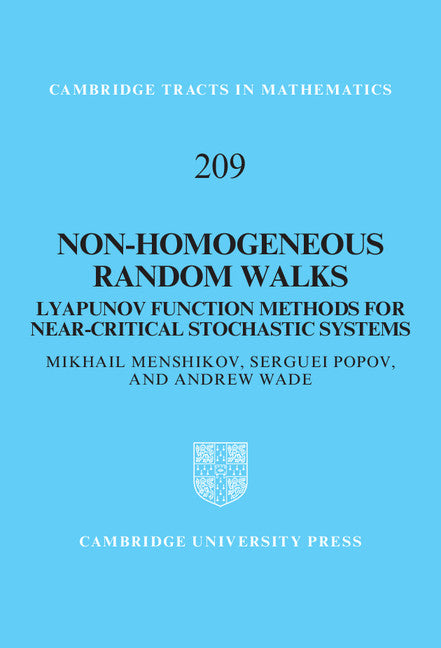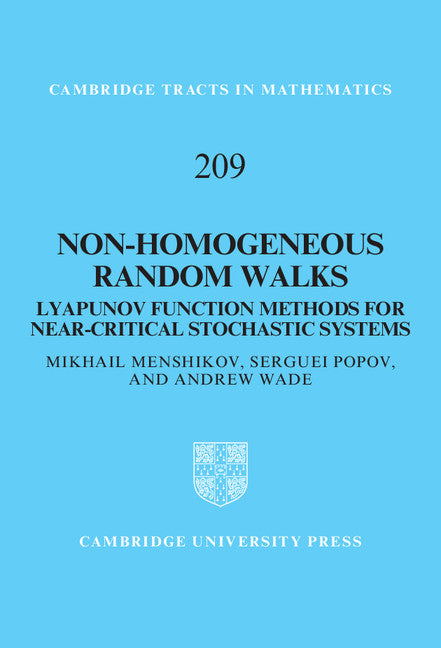Freshly Printed - allow 8 days lead
Couldn't load pickup availability
Non-homogeneous Random Walks
Lyapunov Function Methods for Near-Critical Stochastic Systems
A modern presentation of the 'Lyapunov function' method applied to near-critical stochastic systems, exemplified by non-homogeneous random walks.
Mikhail Menshikov (Author), Serguei Popov (Author), Andrew Wade (Author)
9781107026698, Cambridge University Press
Hardback, published 22 December 2016
382 pages, 20 b/w illus.
23.7 x 16 x 3 cm, 0.73 kg
'This book gives a comprehensive account of the study of random walks with spatially non-homogeneous transition kernels. The main theme is to study recurrence versus transience and moments of passage times, as well as path asymptotics, by constructing suitable Lyapunov functions, which de?ne semi-martingales when composed with the random walk. Of special interest are the Lamperti processes, which are stochastic processes on [0, ?) with drift vanishing asymptotically on the order of 1/x as the space variable x tends to in?nity. … Each chapter ends with detailed bibliographical notes.' Rongfeng Sun, Mathematical Reviews
Stochastic systems provide powerful abstract models for a variety of important real-life applications: for example, power supply, traffic flow, data transmission. They (and the real systems they model) are often subject to phase transitions, behaving in one way when a parameter is below a certain critical value, then switching behaviour as soon as that critical value is reached. In a real system, we do not necessarily have control over all the parameter values, so it is important to know how to find critical points and to understand system behaviour near these points. This book is a modern presentation of the 'semimartingale' or 'Lyapunov function' method applied to near-critical stochastic systems, exemplified by non-homogeneous random walks. Applications treat near-critical stochastic systems and range across modern probability theory from stochastic billiards models to interacting particle systems. Spatially non-homogeneous random walks are explored in depth, as they provide prototypical near-critical systems.
1. Introduction
2. Semimartingale approach and Markov chains
3. Lamperti's problem
4. Many-dimensional random walks
5. Heavy tails
6. Further applications
7. Markov chains in continuous time
Glossary of named assumptions
Bibliography
Index.
Subject Areas: Stochastics [PBWL], Probability & statistics [PBT], Groups & group theory [PBG]


